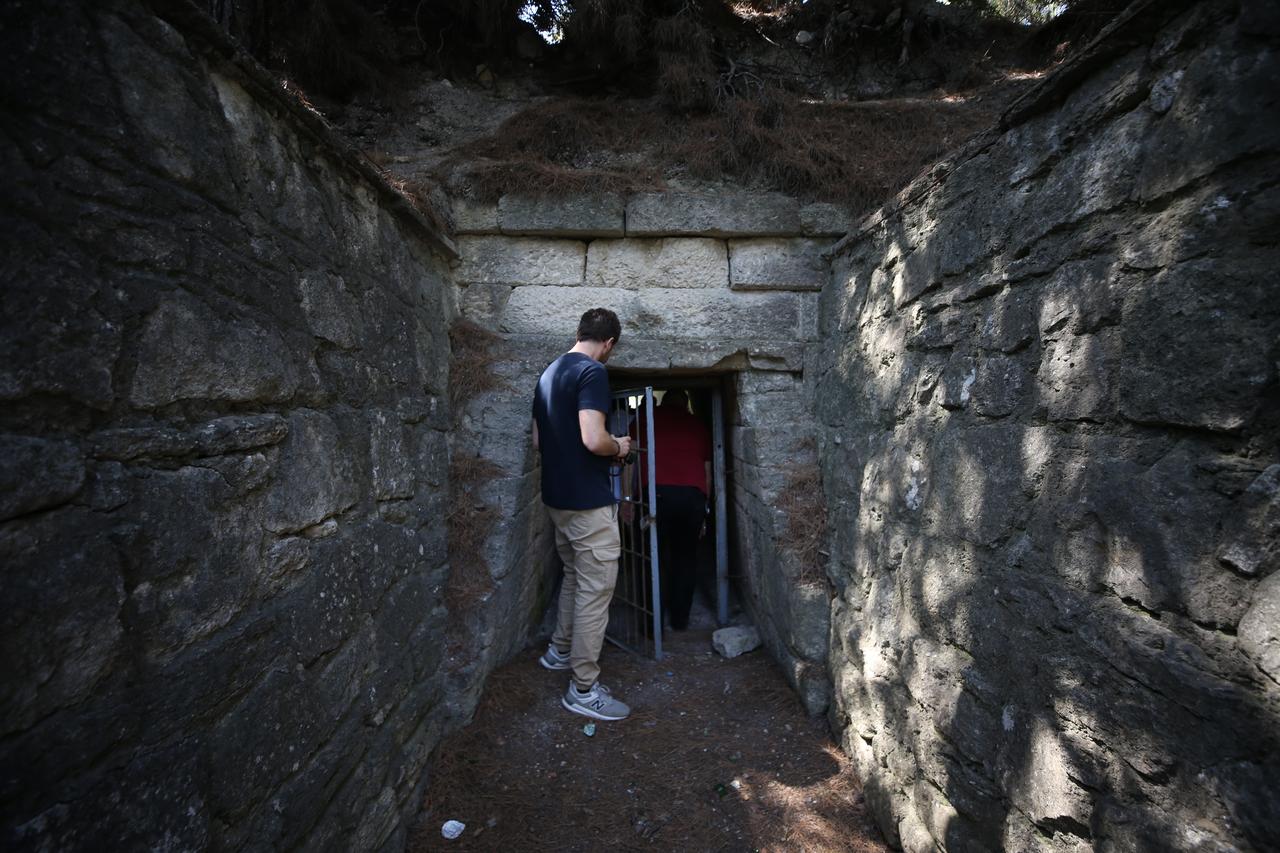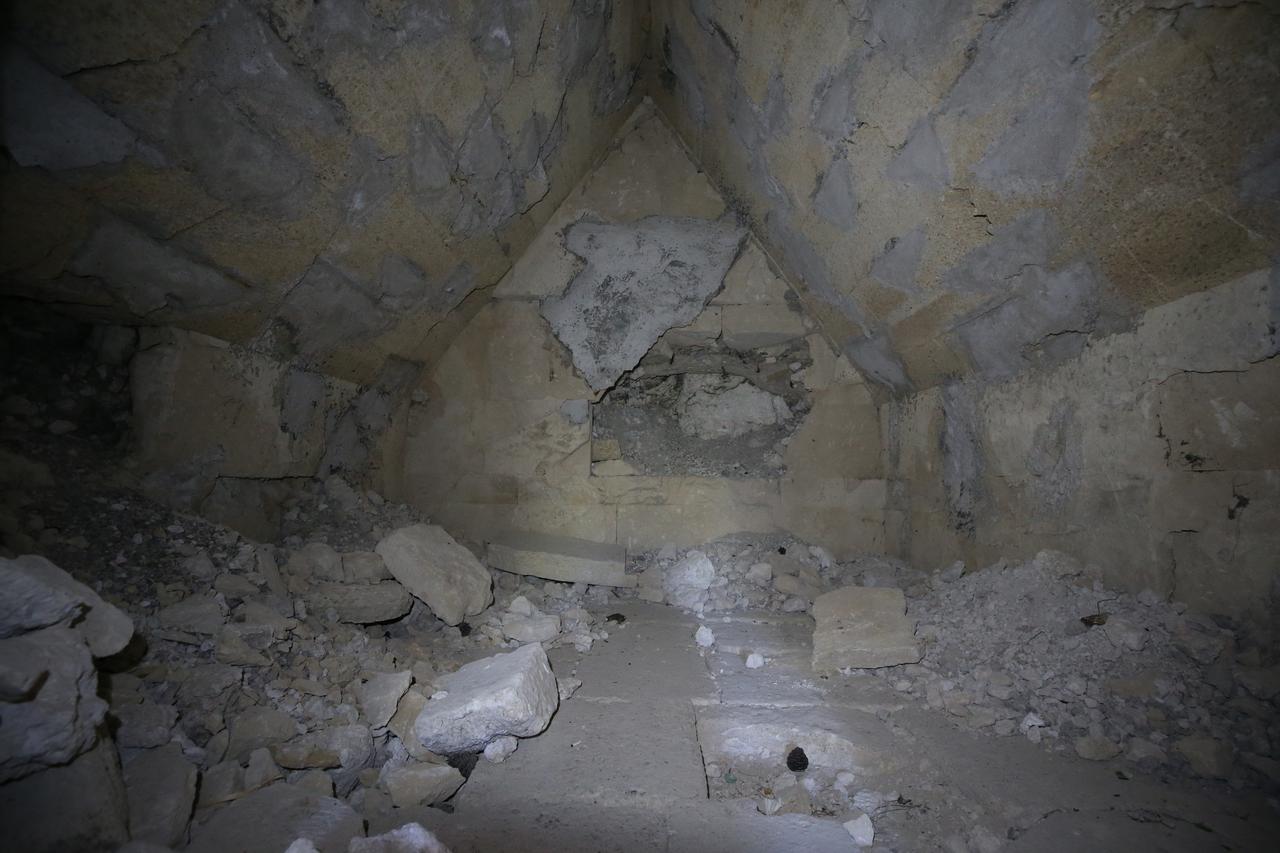
A monumental burial mound dating back 2,500 years, known as the Dardanos Tumulus, is once again under close scientific scrutiny in Türkiye’s northwestern province of Canakkale.
First uncovered in 1959 during the construction of a cement factory, this ancient tomb is among the oldest known in the Troas region.
Today, a new research team composed of experts from Canakkale Onsekiz Mart University (COMU), Oxford University, and other international institutions is revisiting its treasures to unlock deeper insights into the cultural heritage of the area.

The Dardanos Tumulus comprises three main sections: a corridor, an antechamber, and the central burial chamber.
Early salvage excavations led by archaeologists from the Istanbul Archaeological Museum revealed multiple human burials placed either through inhumation (burial in the earth) or cremation (burial after burning), accompanied by a wealth of grave goods.
Among the finds were sandstone funerary beds, fine wooden furniture, fragments of silk fabric, golden ornaments, small statues, baskets, musical instruments, and containers made of bronze, ceramics, wood, bone, shell, and glass.
Today, these valuable artifacts are preserved and displayed at the Troy Museum.

Professor Tuna Sare Agturk of Oxford University, who leads the renewed investigation, underlined the significance of this tumulus in the archaeological world.
She compared its richness to the royal burial mounds of Gordion, associated with King Midas, and the Vergina tomb of King Philip in Greece.
Agturk explained that the international team includes specialists from fields as varied as art history, archaeobotany, materials science, epigraphy, and physics.
Together, they are examining every aspect of the findings both at the Troy Museum and on-site at the tumulus. The renewed work, she added, will result in a dedicated publication as well as an exhibition highlighting Dardanos.
Among the most striking objects is a unique statue of Aphrodite decorated with gold details and preserved colors, for which there is no known parallel worldwide.
Researchers are digitally reconstructing this statue along with musical instruments and textiles to better understand the manufacturing techniques and stylistic elements of the period.

Professor Agturk also pointed to exceptionally rare organic materials preserved inside the burial mound, including shoes, musical instruments, and textiles.
She described women’s footwear crafted from wood and leather and decorated with gold embroidery, adding that they are investigating the types of wood and leather used, as well as how these objects were produced.
This line of research offers important clues about how the local elite lived, their sense of fashion, their medical or cosmetic practices, and their intellectual activities.
Agturk noted that these finds support the presence of high-status women who had music education and cultural influence in the community.

COMU Rector Professor Cuneyt Erenoglu emphasized that the tumulus, which sits within the university’s land, had been left neglected until recently. Thanks to new landscaping efforts and the involvement of scholars such as Professor Agturk, the project is transforming the area into a center of heritage and learning, reconnecting it with traces of the ancient Troy civilization.
Professor Sencan Altinoluk from the same university added that his research on ancient coinage will help build a historical picture of Dardanos as one of the earliest cities in the Troas region, clarifying its political and cultural links.
Meanwhile, Christos Tersiz of the Austrian Academy of Sciences said he was delighted to be part of the team.
Tersiz, a specialist in musical instruments, identified three harp-like instruments among the burial goods, suggesting that at least three female burials may have been associated with them.

Professor Maria Stamatopoulou of Oxford University also expressed excitement about the work, stressing that the amount of preserved organic material in the tumulus provides a rare window into the production methods and lifestyles of the ancient Mediterranean world.
The research team plans to conclude their investigations within a year and share their findings through an exhibition and a book project, helping to further establish Dardanos as a symbol of Canakkale’s rich archaeological legacy.